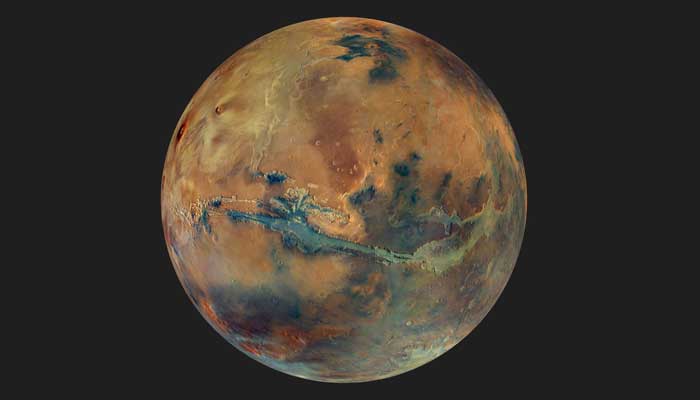Mars is often called the Red Planet, but a new satellite image from the European Space Agency (ESA) reveals a mix of swirling yellows, oranges, and browns. The colourful landscape also features an impact crater and four dust devils sweeping across the surface.
Captured by the high-resolution camera aboard ESA’s Mars Express orbiter, the image showcases Arcadia Planitia — a region crucial to studying Mars’ history and its suitability for future human exploration, reported Space.com.
Located northwest of the solar system’s tallest volcanoes, Arcadia Planitia is notable for its ancient solidified lava flows, estimated to be up to 3 billion years old. Scientists also believe the area contains water ice just beneath the surface, making it a key target for upcoming Mars missions, according to ESA.
The region frequently hosts “dust devils,” which are short-lived, whirlwind-like phenomena formed when warm surface air rises and lifts dust. In the image, four dust devils appear as faint white streaks, crossing from the darker to lighter regions of the plain.
In the lower right corner of the photo, a large impact crater measuring about 9 miles (15 kilometres) wide is visible. The layered patterns surrounding the crater suggest that the ground contained significant water ice at the time of impact. The crater’s relatively intact appearance also indicates it formed recently in geological terms.

